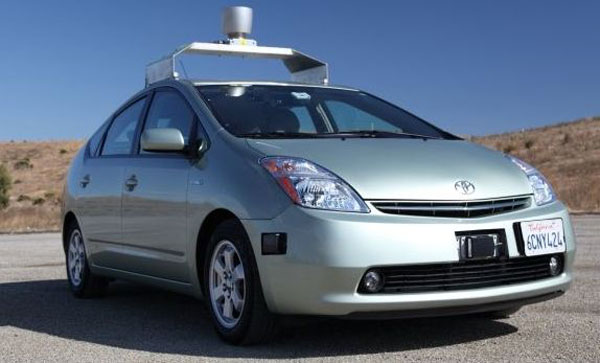Factory-installed and even aftermarket identity management applications may soon be standard components on automobiles, as the federal government looks for ways to leverage automation and collision avoidance technology to make the country’s highways and roadways safer. That’s the conclusion of a new report from the Government Accountability Office (GAO), which finds that vehicle to vehicle communications are poised to take off, but that significant security and privacy challenges must first be met, identity management top among them. The report, GAO 14-13 (PDF available here) takes the measure of what the GAO calls “Intelligent Transportation Systems,” including vehicle-to-vehicle (or V2V) technology. The GAO found that V2V technology that allows automobiles to communicate with each other in ways that can prevent accidents has advanced considerably in recent years. Automakers, working with the Department of Transportation, are testing the technology in real-world scenarios. However, the deployment of V2V technologies faces a number […]
V2V
When Autonomous Vehicles Crash, Is The Software Liable?
Many industries are wrestling with the blinding speed of technologic change. Mobile devices like smartphones and tablets are transforming the way employees work and customers interact with a business. And that doesn’t even take into account the (coming) revolution of smart devices and remote sensors that is referred to as The Internet of Things. But few industries are wrestling as hard with the implications of that change as the Insurance industry, which must assess the long-term impact of huge forces like technology innovation or, say, climate change on risk. One example: how will the advent of autonomous vehicles or even computer augmented driving change the auto insurance business? And, when two computer-guided cars crash, who (or what) is liable? Those were some of the questions posed to attendees at this week’s Emerging Technology (or EmTech) Conference at The Massachusetts Institute of Technology (MIT). The speaker, Joe Coray, is the Vice […]
Podcast: Securing The Internet of Things
One of the most vexing problems created by the fast-evolving Internet of Things is how to secure the massive trove of data that is transmitted and then stored by smart devices such as automobiles, consumer and household electronics and personal devices. As we’ve seen, private sector firms have been aggressive in leveraging new technology to connect their products to the Internet. But less thought has been given to the security and privacy implications of doing so. Now people are starting to take notice. In recent weeks, the FTC settled a case with a California firm, TRENDNet over balky home surveillance cameras they sold – cameras that were discovered to be easily discoverable and hackable from the public Internet. But, with so many cooks in the IoT kitchen (so to speak), where does responsibility for securing technology lie? Recently, I chatted with an expert on security and the Internet of Things. […]
Report: Crematoriums To Caterpillars Shodan Reveals Internet Of Things
What kind of stuff is lurking out there on the vast (and growing) Internet of Things? A recent story in Forbes makes the point that its a lot more varied than you might think – everything from Caterpillar trucks to public school classrooms to a crematorium. And “yes,” I said “crematorium.” The idea that surveillance cameras can be accessed from the public Internet isn’t really new. Security researchers have been showing off ways to sidestep security features for IP enabled surveillance cameras for years. We wrote last week about the Federal Trade Commission’s case against a California company, TRENDNet, which made a line of balky, in secure home surveillance gear. But Kashmir Hill makes the point in her story that surveillance cameras are just the tip of the iceberg. Hill interviewed security researchers and professional Shodan jockeys, who use that hardware focused search engine to uncover supposedly secure equipment and industrial control […]
SANS’ Pescatore: Security Needs Rethink For Internet Of Things
Our friends over at InfoSecurity Magazine have an interesting interview with SANS’ Director of Emerging Security Trends John Pescatore about security and The Internet of Things. Pescatore gets a somewhat skeptical hearing from the enterprise-focused IT security publication. (“Granted, it’s unlikely that anyone would be sending a car an email with a malicious executable, but that doesn’t mean there aren’t threat vectors for hackers to exploit,” InfoSecurity opines, by way of an introduction. Oh really?) But Pescatore brings a “deep field” view to this topic, noting that the security issues around IoT are already upon us in the spent almost two decades as Gartner’s Obi-Wan Kenobi for security, where he advised companies and technology vendors on the best way to navigate the shifting sands of the IT security space. Speaking to InfoSecurity, Pescatore says the 100,000 foot message is: ‘let’s learn from our mistakes.’ Specifically, that means not looking at intelligent devices, including […]


